Send Email
Call / WhatsApp Anytime
Send Email
Call / WhatsApp Anytime
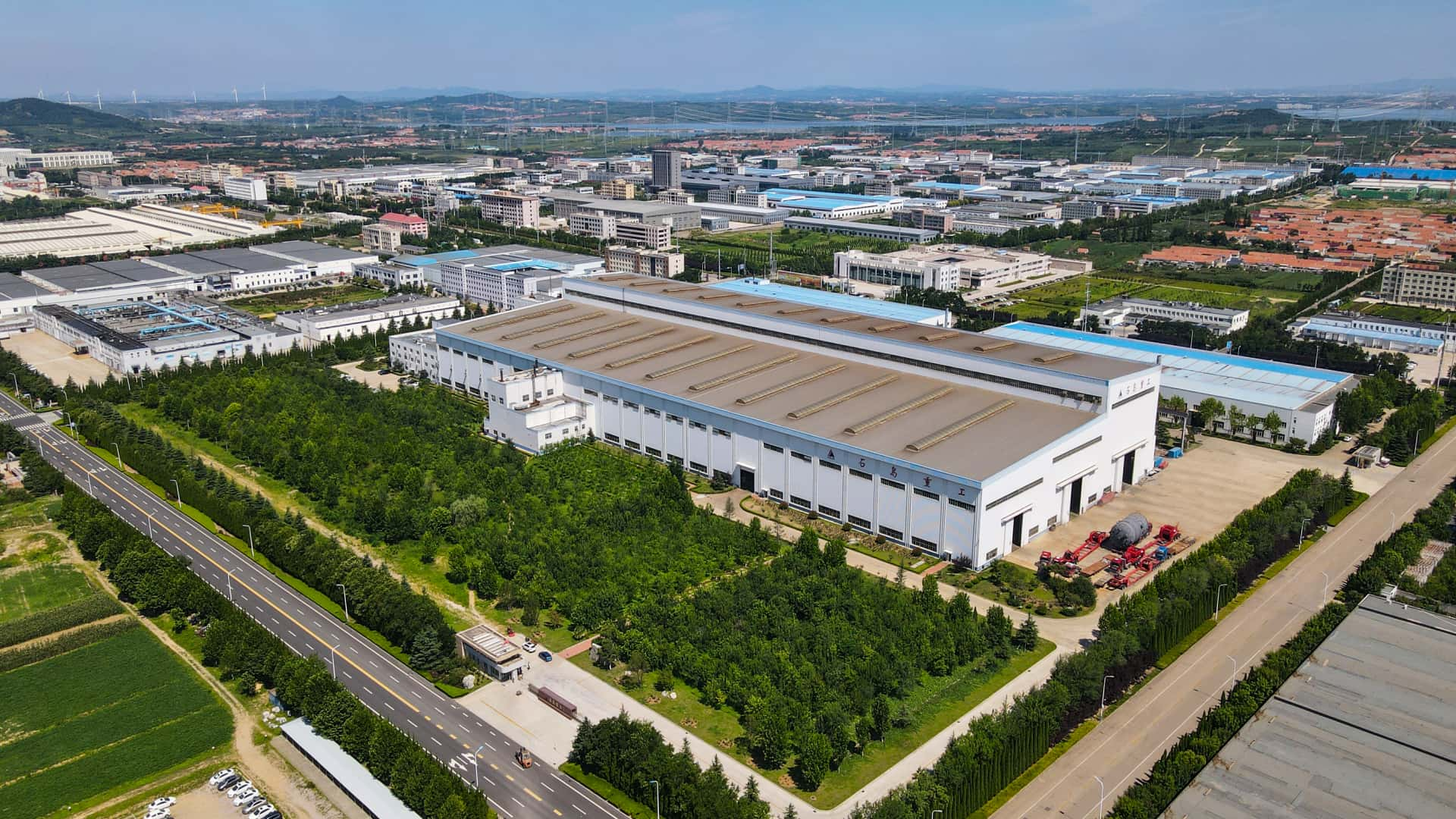
Call / WhatsApp Anytime
The rapid global transition toward low-carbon and renewable energy systems has reshaped how energy is produced, stored, and transported. At the heart of this transformation lies the pressure vessel—a critical component enabling safe containment and controlled processing of gases, liquids, and chemical reactions under high pressure and temperature conditions.
From hydrogen production and storage to compressed air energy storage (CAES), biofuel synthesis, and carbon capture & utilization (CCUS), pressure vessels are playing an increasingly essential role in enabling the reliability, scalability, and safety of new energy technologies.
This article presents a comprehensive exploration of how pressure vessels are applied across various sectors of the new energy industry, highlighting key applications, materials, design standards, and operational challenges.
Here are selected project cases demonstrating our capability in delivering pressure vessels for complex petrochemical units.
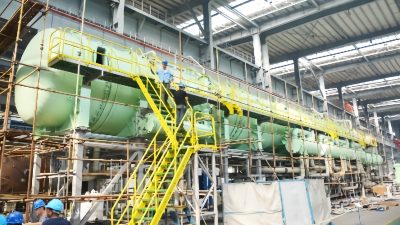
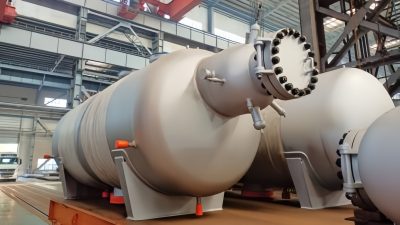
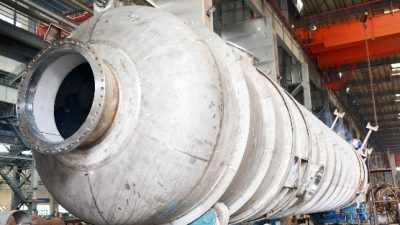
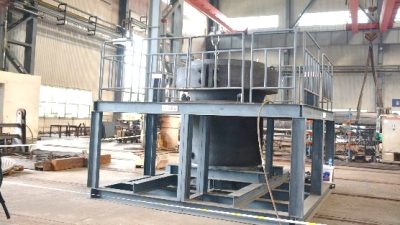
| Client | Equipment Name | Spec | Weight / Material |
|---|---|---|---|
| Beijing Yongruida Technology Co., Ltd. (China) | High-Pressure Reactor Vessel | Φ1680 × 2140 mm | 22T 20MnMoⅣ |
| Symbion Power Lake Kivu Limited | Separator Equipment | φ3380 × 22600 × 10 Quantity: 8 Units | 29T Duplex Stainless Steel 2205 |
| Shema Power Lake Kivu Limited (Rwanda) | Lake-Bottom Biogas Separator | Φ2650 × 20/24 × 7500 mm Quantity: 17 Units | SA240 316L Stainless Steel |
| IDE Ltd. (Israel) | MED Desalination Unit – 3600 m³/day | Diameter 8–9m × Length 42.6m Quantity: 1 Unit | Vessel Body & Components: Q235B |
| IDE Ltd. (Israel) | Structural Frame Units (Desalination System) | 11865 × 2510 × 2510 mm Quantity: 3 Units | Material: Q345B |
| Harbin Turbine Auxiliary Engineering Co., Ltd. (China) | Steam-Water Separator Reheater | — Quantity: 2 Units | Industry: Nuclear Power – Steam System Equipment |
Hydrogen is one of the most promising clean energy vectors, but its production, storage, and transport require advanced pressure containment technologies.
Electrolyzer Pressure Vessels: In alkaline and PEM electrolyzers, pressure vessels house hydrogen and oxygen separation processes, operating at pressures up to 30–50 bar.
Hydrogen Storage Tanks: Type I to Type IV pressure vessels used for on-site or mobile hydrogen storage, often rated for 350 or 700 bar in mobility applications.
Hydrogen Compression Buffers: Installed at refueling stations or pipeline hubs, these vessels balance flow and pressure fluctuations in the hydrogen distribution network.
Methanation & LOHC Reactors: Pressure vessels support the catalytic conversion of hydrogen into synthetic fuels or liquids for easier handling.
High-purity hydrogen service requires austenitic stainless steels or nickel alloys to resist embrittlement.
Advanced composite-lined tanks (e.g., CFRP/Type IV) are used in mobility sectors.
Safety is governed by ISO 11119, ASME BPVC, and EC79 standards for hydrogen vessels.
With the rise of renewables like solar and wind, grid-scale energy storage becomes essential. Pressure vessels play a pivotal role in mechanical and thermal storage systems:
Compressed Air Energy Storage (CAES): Vessels store air at 100–300 bar, which is later released to drive turbines during peak demand.
Thermal Storage Vessels: Pressure tanks are used to store superheated steam, molten salt, or pressurized water, used in CSP (concentrated solar power) plants or industrial heating.
Phase Change Material (PCM) Containment: For smart buildings and hybrid grids, pressure vessels store advanced thermal fluids that change state with minimal energy loss.
Thick-wall carbon steel or Cr-Mo steels for high-cycle fatigue
Large-capacity vertical or horizontal orientation
Built-in heat exchangers or internal coils for energy transfer
Internal lining for corrosive media like brine or molten salt
In LPG terminals and gas plants, various process vessels manage phase transitions (liquid ↔ vapor) and maintain flow regulation throughout the handling system.
Separators / Knockout Drums: Remove moisture and impurities before bottling
Surge Tanks / Buffer Vessels: Prevent system shock and ensure continuous flow
LPG Vaporizers: Convert LPG from liquid to vapor for downstream burners
Condensate Recovery Vessels: Capture usable hydrocarbons from vent gases
Accumulator Tanks: Manage pressure fluctuations and vapor returns
These vessels must be accurately sized to match system capacity, prevent cavitation, and ensure safe startup/shutdown transitions. Material selections often include carbon steel with epoxy linings, 316L stainless steel, or PTFE-lined interiors depending on media purity and corrosivity.
In the bioenergy sector, pressure vessels are used in various fermentation, digestion, and catalytic synthesis processes, particularly for:
Anaerobic Digesters: Large reactors operating at low to moderate pressure (1–10 bar) to produce biogas from organic waste.
Biomethanation Vessels: Convert biogas into biomethane under controlled pressure and temperature.
Bioethanol/Biodiesel Reactors: Pressure vessels used for transesterification or fermentation, often with heat jackets and mixers.
Gas Holders & Scrubbers: Temporary gas storage or purification vessels handling H₂S or CO₂ in biogas lines.
316L stainless steel, duplex steels, and glass-lined carbon steel are frequently used due to the acidic and bacterial environments inside.
As carbon reduction becomes a global priority, pressure vessels serve vital functions in capturing, compressing, storing, and transporting CO₂:
Absorber Columns: Pressure vessels packed with amines or ionic liquids to capture CO₂ from flue gas streams.
Desorber (Stripper) Columns: Release CO₂ from solvents at high temperature/pressure.
CO₂ Compression Drums: Store pressurized CO₂ before it is liquefied or transported via pipeline.
Supercritical CO₂ Reactors: Used in CO₂-to-chemical conversion or supercritical extraction applications.
Vessels must withstand corrosive, acidic environments, and are often fabricated from SS316Ti, Inconel, or Cladded Q345R + S31603 structures.
In new energy systems, smart control and preventive diagnostics are essential to ensure vessel integrity and process stability.
Modern pressure vessels in the renewable sector include:
IoT-enabled pressure/temperature sensors
Smart manways with leak detection
Vibration/strain monitoring for fatigue life prediction
Thermal cameras & AI-assisted predictive maintenance platforms
These technologies comply with IEC 61511, ATEX Zone classifications, and emerging Industry 4.0 standards.
Due to the novel risks in new energy processes (e.g., hydrogen embrittlement, supercritical phases), vessels must comply with updated, application-specific codes such as:
ASME Section VIII Div.1/2
EN 13445 (unfired pressure vessels)
PED/CE (Europe)
GB150 / TSG R0004 (China)
ISO 14687, ISO 19880 for hydrogen fueling
API 579 for fitness-for-service assessments
Full documentation includes:
3.1B/3.2 Material Certs
WPS/PQR welding records
NDT logs (RT, UT, MT, PT)
FAT/SAT reports
Third-party inspection reports (Lloyd’s, TUV, SGS)
As the global energy paradigm shifts, pressure vessels are becoming more than just containers—they are critical enablers of energy transition. Whether storing hydrogen at 700 bar, operating at 300°C in thermal storage systems, or managing CO₂ capture and reuse, these vessels must integrate precision engineering, next-gen materials, and smart technology.
The future of clean energy is under pressure—and we build vessels that are ready for it.
Are you working on hydrogen, carbon capture, or energy storage infrastructure?
We deliver custom-engineered, certified pressure vessel solutions for all sectors of the new energy economy.
Why Choose Us?
Certified Safety, Reliable Quality, Custom-Engineered Pressure Vessels.
